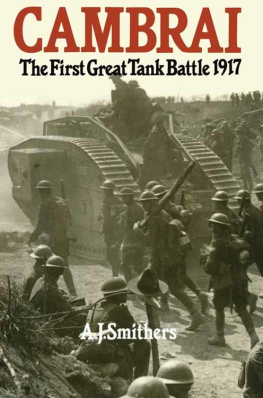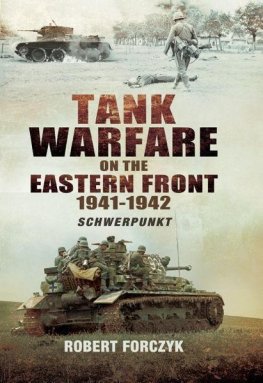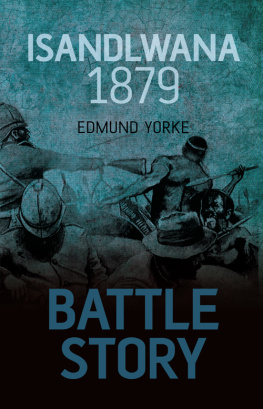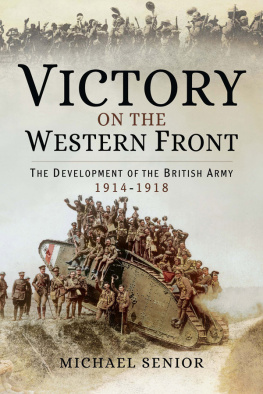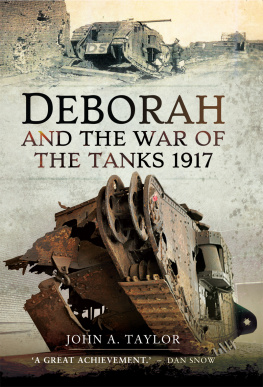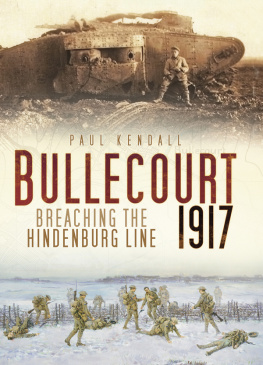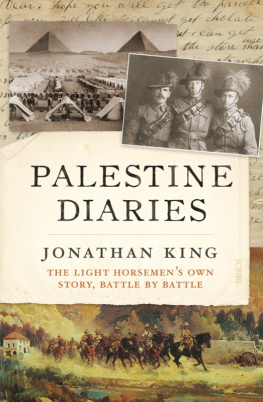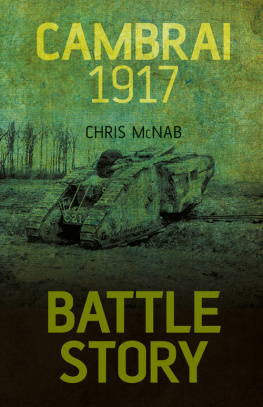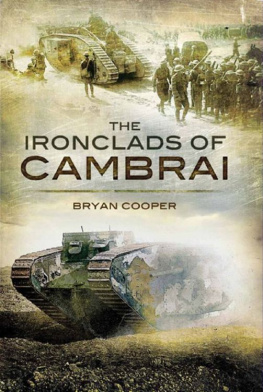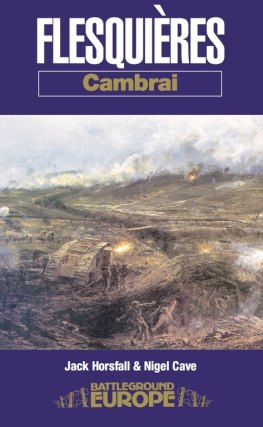CAMBRAI
By the same author:-
THE MAN WHO DISOBEYED: Sir Horace Smith-Dorrien and his Enemies.
SIR JOHN MONASH
THE KAFFIR WARS 17791877
TOBY: A Real-life Ripping Yarn.
DORNFORD YATES: A BIOGRAPHY.
COMBINED FORCES
A NEW EXCALIBUR: The Development of the Tank 19091939
RUDE MECHANICALS: An Account of Tank maturity during the Second World War.
HONOURABLE CONQUESTS: An Account of the Enduring Work of the Royal Engineers throughout the Empire.
CAMBRAI
The First Great Tank Battle
1917
by
A. J. Smithers
LEO COOPER
LONDON
First published in Great Britain in 1992 by
LEO COOPER
190 Shaftesbury Avenue, London WC2H 8JL
an imprint of
Pen & Sword Books Ltd.,
47 Church Street, Barnsley, S. Yorks S70 2AS
Copyright A. J. Smithers, 1992
ISBN 085052 268 4
A CIP catalogue record for this book is available
from the British Library
Typeset by Yorkshire Web, Barnsley, South Yorkshire
in Plantin Roman 10 point
Printed in Great Britain by
The Redwood Press
Melksham, Wiltshire
CONTENTS
For anyone minded to write about the Battle of Cambrai there is only one possible point of departure. The Library of the Tank Musem at Bovington Camp has the privilege of owning great quantities of manuscript material, all of it authoritive and, for the most part, written by those who fought there and before memories began to fade. My gratitude to David Fletcher, Librarian and author, transcends all the rest. Not only did he produce far more documents than a single volume can digest but, of his kindness, he found time to read the typescript and discover errors. That, I emphasize, saddles him with no responsibility for the now contents. The Imperial War Musem, the Public Record Office and the Liddell Hart Centre for Military Archives at Kings College, London custodians of the papers of Sir James Edmonds and Sir Launcelot Kiggell have all been laid under contribution and have been generous with help above the call of duty. The Museums of the Intelligence Corps at Ashford, of the Royal Artillery at the Rotunda, Woolwich, and the Royal Engineers at Chatham all furnished necessary ingredients. In particular, the Corps Library RE, personified by Mrs Magnuson, went to much trouble in disinterring for me all that remains to be known about that early surface-to-surface missile the Livens Projector. The Estate of the late Major-General Sir Edward Spears permitted me to quote from Prelude to Victory and Two Men Who Saved France; this I much appreciate, for the General was in a class of his own as both actor and chronicler. Lastly, my thanks to faithful friends. To Major Derek Poulsen for reading more than one draft typescript and criticizing all of them; and to Philippa Arnott for once again transmuting heaps of what appeared nothing beyond erasures and corrections into typescript that is a pleasure to read. I would include M. Le Patron of the Hotel de la Paix in Albert were it not for his cook, whom I cannot congratulate.
Throughout the 1930s the Army organized many Battlefield Tours, in which senior men who had participated could pass on their experiences to the next generation. Brigadier P.C.S. Hobart (in later years Major-General Sir Percy) led one of Tanks Corps officers to Cambrai in 1935. A number of those attending, at Hobarts request, wrote down accounts of what they best remembered; as all of them were still serving they were necessarily anonymous. These, together with much else, were put together under the title A Narrative Of Cambrai and ended up in the Library of the Tank Museum at Bovington, by whose kind permission I have drawn upon it. In some instances identification of the memorialists has been possible, but others remain unclaimed. In the following pages various unattributed recollections appear. All these come from Hobarts unfinished book.
In a letter to Sir Basil Liddell Hart written in 1953 Hobart calls it this pile of dusty pleas from the dead years. And very little response did they evoke. Any other possible reader of this book may agree that Brigadier Hobart deserved better fortune, here as in other ways.
Children of to-day, when reading the great stories of the past, will not thrill to them the less when they remember that deeds as wonderful were performed in their own lifetime by their fathers and their fathers friends.
John Buchan
Days to Remember 1922


B Y THE SUMMER OF 1914 armies seemed to have come a long way forward since Napoleon and the Duke; it was, in reality, only a matter of degree. The Americans in their Civil War had introduced repeating rifles and a serviceable machine gun. On the fringes there were new things, motor lorries and ambulances all with solid tyres; overhead flew, slowly and uncertainly, those machines that General Foch had marked down as good sport but no good for war. Armies remained, as they had been for a long time, the triumvirate of horse, foot and guns. The greatest of these was the horse. It was the shock arm, carrying everything before it by speed and weight; it hauled backward-pointing guns to battle and it carried all officers of all arms save the most junior infantry subalterns. The horse was the army; lacking it, there would be nothing. The panache had been pulled about a little in South Africa. A sapper officer, who could not be expected to have a proper appreciation of such things, had ended a long guerrilla by herding the enemy between little corrugated iron affairs called blockhouses and great quantities of barbed wire. This, one hoped, would never be repeated.
When the word was given, armies walked and rode towards the battle at an easy pace. They encountered each other, the machine guns raised their voices and all disappeared into the earth. The Germans, who had started it, occupied substantial parts of France from which they would have to be expelled. For the next three years the best men of their generation went to their death or suffered cruel wounds for that end. It slowly dawned upon those at the head of affairs that something new was needed if the war was not to go on for ever and destroy Christian civilization in its entirety.
The new thing came, the machine that would, mercifully, put an end to the use of the warhorse and demonstrate how a few men with a superior science could overcome multitudes without it. That bald statement is accurate enough, but it tells only a part of the tale. Old military qualities, the qualities that put so many battle honours on regimental colours, were still needed as much as ever. In addition there came a call for skills not to be found in the armies led by officers commissioned by Queen Victoria. This is an attempt to tell how they were, after much grief, combined together to bring about victory in the west. If one may speak of a theatre of war, then this battle Cambrai was the dress rehearsal. All subsequent productions, even to the Gulf, have taken their tone from it.
I have made no attempt to describe every action of every formation, unit and sub-unit. There can be few people now who would seek information about the doings of high-numbered battalions that have all gone the way of the Saxon fyrd and Elizabethan trained bands. And tout expliquer, cest tout ennuyer. The Official Historian, true to his office, recounts it all, both friend and foe alike. There is a place for both the miniature and the mural.

